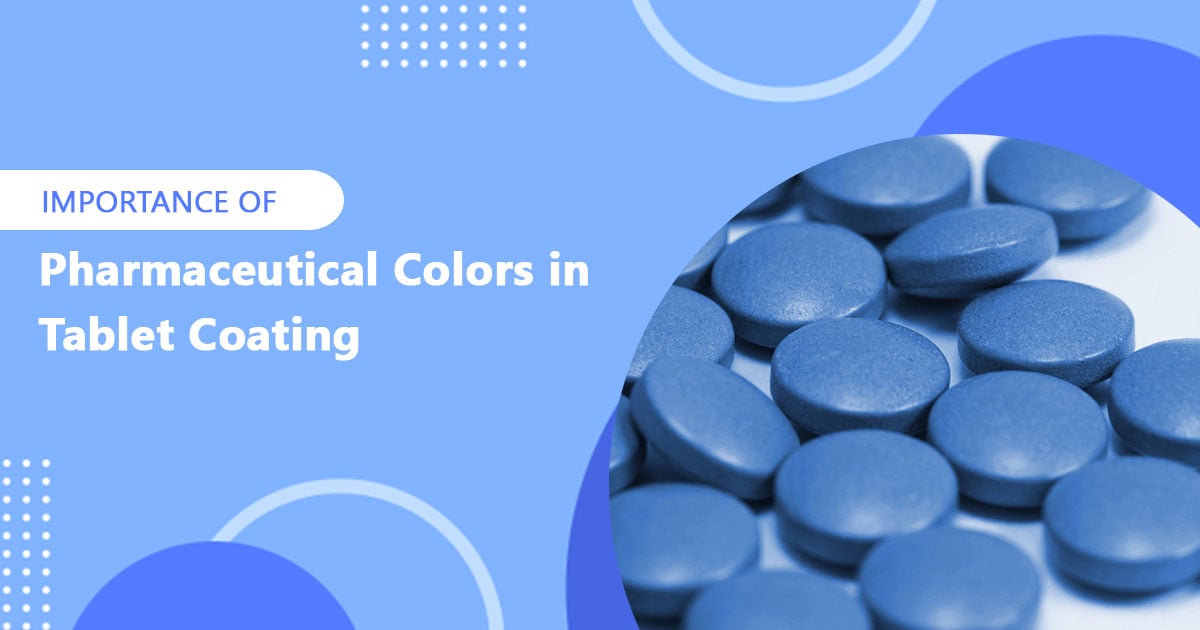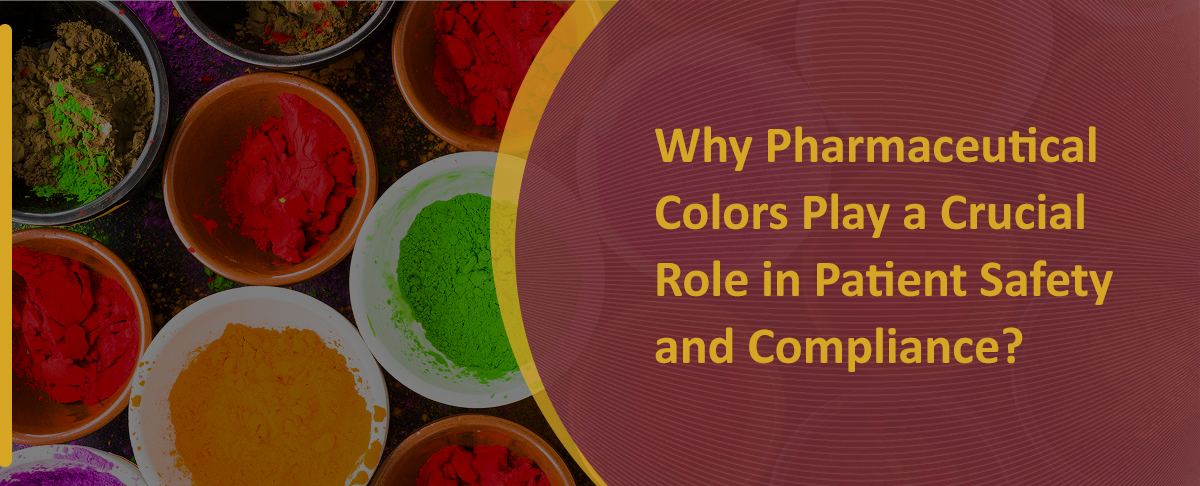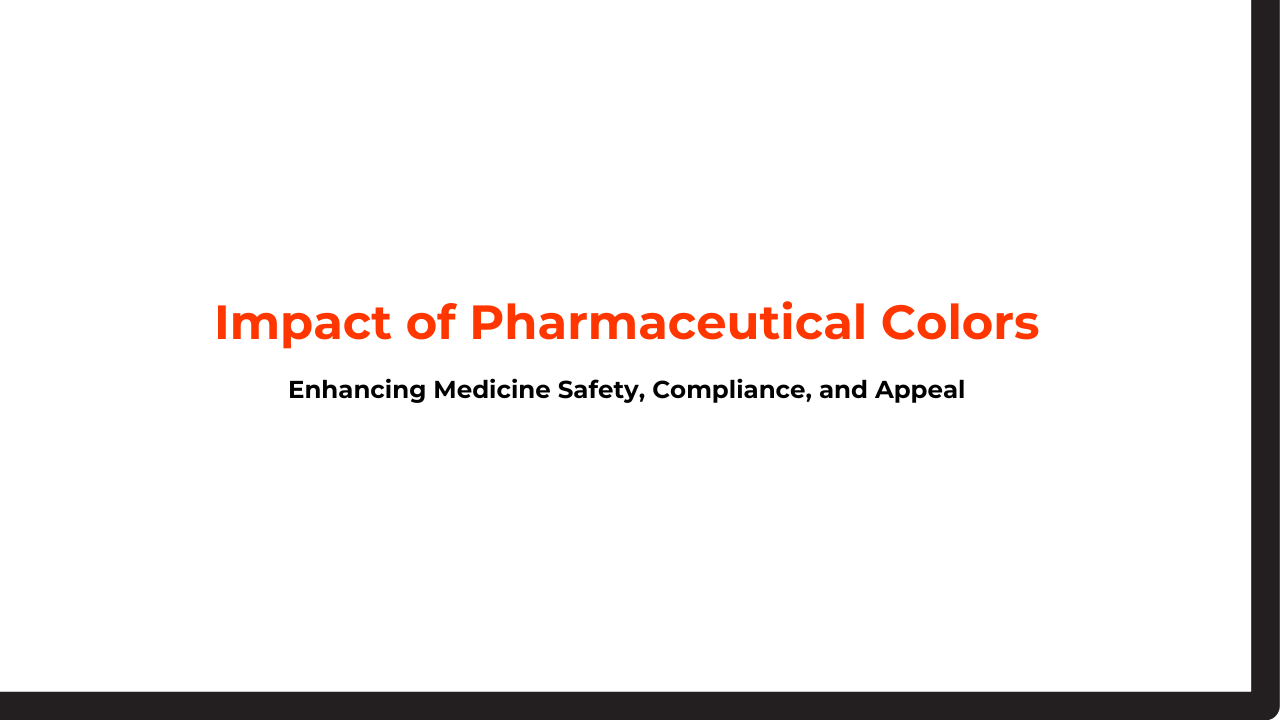The use of pharmaceutical colors in the pharmaceutical industry is widespread due to their ability to provide a brighter, more vivid, and vibrant color to products. Many companies in the market use pharmaceutical colors in the preparation of tablet coatings. There are strict guidelines & rules set by the US FDA to ensure the proper use of tablet coating and as directed.
The pasty pastel hues of over-the-counter medications were the norm in the early days, while prescription medications were transparent vials filled with colorless pills. Colors are now available in both pill and liquid forms, so whether color is significant is unclear. Despite what some may think, the pharmaceutical color of pills serves more than just an aesthetic purpose. It has many other benefits, and it has become necessary due to this property.
If you are still wondering about the importance of pharmaceutical colorants in tablet coating, this blog is for you. All right! In this blog post, we will guide you through the importance of pharmaceutical colorants in the tablet coating process.
So, let’s get started with the basics!
What is Tablet Coating?
Tablet coating involves the process of applying a coating material to the surface of a tablet to give it the desired properties or colors in an efficient manner. Thanks to tablet coating, it is now possible to swallow tablets more easily and quickly, prevent active medication from being released, and improve the overall look and feel of your tablet efficiently. The key benefit of tablet coating is to enhance the overall taste, odor, and color of the drug.
Different Tools & Technologies Used for Tablet Coating
Here are the following tools and technologies used for tablet coating in pharmaceuticals, including but not limited to:
- Supercritical fluid spray coating
- Electrostatic dry coating
- Fluidized bed coating
- Compression coating
- Hot melt coating
- Apparatus for MAIC
Colorants and Coatings Used in Pharmaceutical Preparations
There are numerous colorants or coatings commonly used in the following pharmaceutical preparations or pharmaceutical colorants:
- Capsules or capsule shells/ coated beads
- Tablets or core/coating
- Topical creams
- Oral liquids
- Ointments
- Salves
Importance of Tablet Coating in the Pharmaceutical Industry
There are numerous reasons why tablet coating is essential in the pharmaceutical industry:
Prevent light-sensitive active materials from degrading during formulation by maintaining their prolonged stability.
- Lower the risk of interaction between incompatible components.
- To improve the aesthetic appearance of the pharmaceutical dosage forms.
- It helps to provide a nasty smell, color, or taste to the tablet.
- Prevent acid-labile drugs from the significant stomach environment.
- Prevent drugs or medicines from both physical and chemical reactions.
- Enhance patient acceptability of medications.
- Strengthen the mechanical properties of the dosage form.
Understanding the Process of Tablet Coating
Tablet coating in the pharmaceutical industry is performed under a stringent process, where coating tablets requires a complex process that includes the formation of a thin layer around them. According to research, it is estimated that the thin layer formed around the tablet accounts for between 1% and 9% of the tablet’s initial weight.
Therefore, businesses must consider the tablet coating process, coating ingredients, and the nature or type of the tablet from start to finish. The rheological properties of the applied film coating dispersion are highly important throughout the coating process.
Conclusion
The pharmaceutical industry closely controls and manages the use of high-quality pharmaceutical colorants in tablet coating. The Department of Health and Human Services (HHS) regulates pharmaceutical colors in accordance with the Code of Federal Regulations (CFR) within the pharmaceutical industry.
Generally, other regulatory bodies provide guidelines regarding the certified and approved coloring or colorants in pharmaceuticals, as stipulated in European Union food legislation directive 95/45/EC.
Are you a business in need of high-quality pharmaceutical dyes or colorants for tablet coating? Look no further than Hridhan Chem. Hridhan Chem is a reputable manufacturer and exporter of high-quality synthetic dyes and pigments in India. For more information on our comprehensive range of artificial dyes and pigments, manufactured at our facility, please contact Hridhan Chem today.




